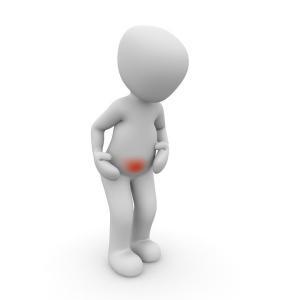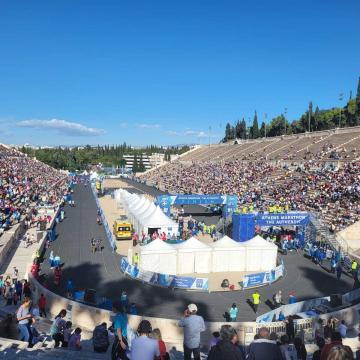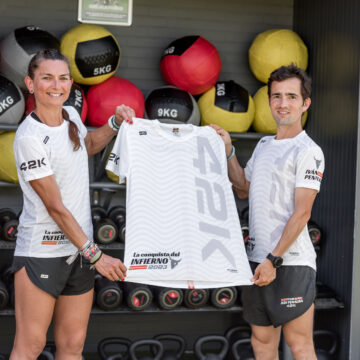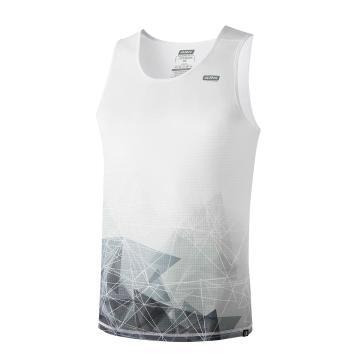Subscribe to our newsletter to find out about all the news and promotions, and automatically receive a welcome discount coupon in your email.
Runners usually overcome adversity: we defy the weather conditions, we defy our body and harsh geographical profiles… but few things are more feared than flatus, that unpleasant sensation that can put weeks / months of training on the test day.
That throbbing pain that takes your breath away, which invites you between cramps to stop... Recognized by all good runners, its origin may not be entirely clear. Below we will try to explain what it is, how it occurs and how to prevent it.

Scientifically, flatus is known as transient abdominal pain (DAT). It is defined as an acute and stabbing pain located in the abdominal area, generally lateral although it can also be located in other locations such as the scapular region, associated with repetitive movements of the torso and whose symptoms can be exacerbated during the postprandial state, frequently referred to by people who play sports. It is a benign and self-limited pathology.
WHY DO THEY OCCUR?
There are several theories, although none seems to explain exactly its origin, so we will start with the initial theory that it is a disease of multifactorial origin whose appearance and symptoms largely depend on two factors: The individual characteristics of the athlete and the conditions in which he exercises
After reviewing the existing bibliography, we can conclude that one of the factors that predisposes the most to DAT is suffering from certain morpho-functional alterations, which are mainly specified in the presence of kyphosis and / or the predominance of muscular hypertonicity at the level of the kinetic chain responsible for vertebral stability and hip mobility. On the other hand, and taking into account the studies, the theories that defend the origin of DAT from diaphragmatic ischemia or the presence of cramps in some athletes should be rejected, while it seems confirmed that the intake of certain fluids before and during competition is a clear risk factor.
The risk of presenting episodes of DAT does not seem to be related to either gender or body mass index (BMI), but it is related to age, with which an inversely proportional relationship is established (the older the patient, the lower the risk of suffer it). This could be explained by the ability of the human being to adapt, withstand and overcome the different stimuli and sensations caused by the practice of physical exercise. The level of fitness is inversely proportional to the probability that the DAT will appear. People who train more often have fewer TAD episodes, perhaps because physiological adaptations make athletes less susceptible to pain. It has been observed that people who start practicing sports do not have a higher risk of developing TAD when compared to those who are more experienced. For all this, it can be concluded that the level of training is likely to alter the frequency with which TAD occurs, but not its incidence or the intensity of perceived pain.
HOW TO AVOID FLAT?
It's time to try to find solutions. And it is that the origin of the flatus is not clear, certain recommendations that seem to avoid its appearance do seem to be, among which we could highlight:
- Modify the breathing pattern: taking deep breaths or using abdominal breathing are maneuvers that can reduce the intensity of the symptoms of TAD, once it has manifested.
- Mobilize the abdominal area: Certain strategies such as stretching the affected area, performing deep trunk flexions, applying manual grip on the area, or trying to increase the tension of the abdominal muscles through voluntary maximum contractions, seem to be the most effective solutions used by athletes when DAT Presents itself.
- dietary control: the intake of hypertonic energy supplements (solid or liquid) and their effects on the athlete's body must be monitored and controlled during training, in order to identify possible triggers for DAT episodes and avoid their appearance during competitions. When we are doing sports and we need to hydrate, it is better to drink small and constant sips than large sips, since large sips are a lot of weight on our stomach.
- Thoracic and spinal manipulation: In those cases in which it is suspected that both the alteration of postural orthostatics and excessive muscle tonicity can cause DAT, a physiotherapeutic approach, based on techniques of thoracic manipulation and mobilization and stretching of the vertebral and abdominal muscles (especially the psoas -iliac and quadratus lumbar), could significantly reduce the impact that this ailment has on the athlete.
- Deep, synchronized breathing: Synchronize your breathing with your steps and it will help eliminate this pain. Although it seems surprising, it has direct effects on the runner's stitch.
Let nothing and no one stop us in our prey towards healthy life. Without pain there is no glory
Other entries that they may interest you.
42K · All rights reserved
















Comments
Post a first comment for this entry!